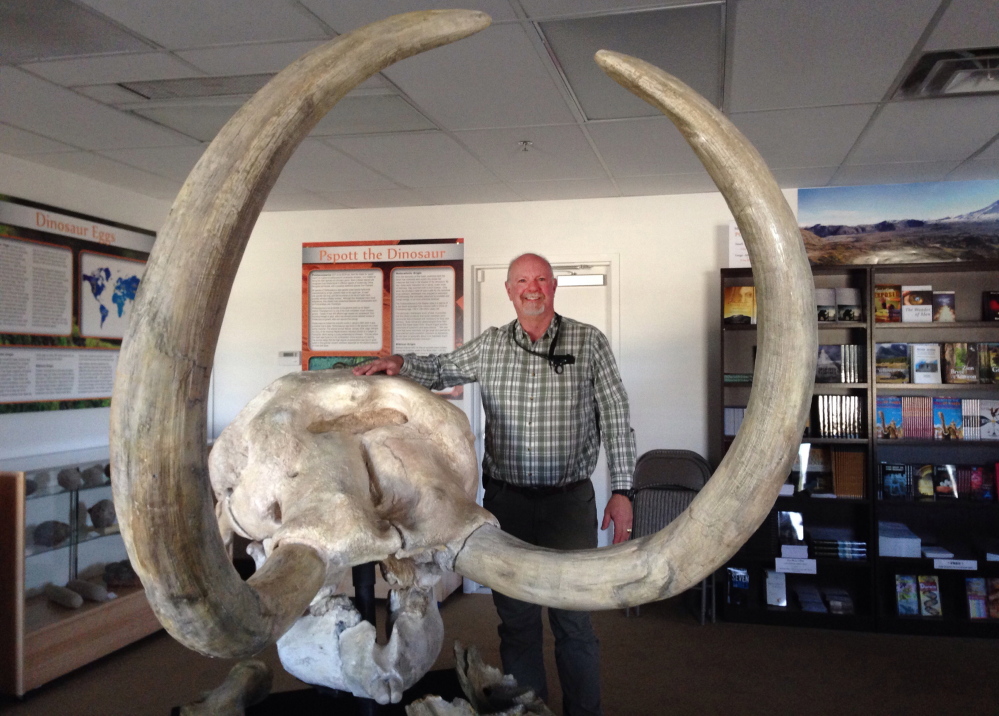BOISE, Idaho — Stan Lutz doesn’t get what the fuss is all about.
So what if three state senators boycotted the morning prayer at a recent legislative session because a Hindu cleric delivered the invocation? It was anti-Christian, they argued, to have a Hindu bless the Senate. Or as state Sen. Steve Vick explained to the Spokesman-Review: “They worship cows.”
Who cares that the Idaho Statesman called the “prayer snub pitiful” and the incident pushed the Idaho Press-Tribune to publish an editorial headlined “Time to end public prayers in Statehouse”?
This is Idaho, Lutz noted from his usual post at the Northwest Science Museum, America’s newest tribute to creationism that’s only a few miles west of the Capitol dome where Rajan Zed got the cold shoulder. On March 3, the Universal Society of Hinduism president prayed to the “Deity Supreme” that Idaho’s elected officials “may long together dwell in unity and concord.”
“I think, if it was me, I would have boycotted it, too,” said Lutz, a 62-year-old retired farmer and museum co-founder. “I like the culture of Idaho. Politically, I think it’s more conservative, for the most part.”
Conservative enough that the Kootenai County Republican Central Committee recently considered declaring it a “Christian state.” And the Ada County Highway District voted to start public meetings with prayer – until a few vocal citizens complained that God doesn’t have much to do with asphalt.
FULL-SIZED ARK PLANNED
Idaho is conservative enough to embrace the museum that Lutz helped create here, an as-yet-modest facility dedicated to the idea that Earth is a mere 6,000 years old. That dinosaurs and men cavorted together. That all those fossils dug up by archaeologists came into being because of the flood.
Yes. That flood.
The Northwest Science Museum’s board of directors has big plans here in one of America’s most conservative states – where the population is more than 80 percent white, the electorate voted for a Republican president in the last seven elections and prayer is top of mind.
When the group finally raises the necessary $150 million, its members plan to erect a 350,000-square-foot facility with a full-sized ark that will rise above Interstate 84 somewhere between Boise and Nampa.
Lutz and Executive Director Douglas J. Bennett say their museum, which opened in June, is different from the dozen or so others dedicated to Creation Week across the country.
Like Chicago’s Field Museum of Natural History or others, its website says, the Northwest Science Museum will focus on natural history — but presented from a biblical point of view and dedicated to the belief “that creation science can explain the evidence we see in the world around us and that it is not just religion.”
Each exhibit is accompanied by an evolutionary explanation and a biblical explanation, Bennett said, and museum-goers will make up their own minds.
FOSSILS FROM BIBLICAL FLOOD
“Because we feel we don’t have anything to hide,” said Bennett, a 54-year-old geologist. “If we put both out there, a person that’s actually seeking the truth will look and say, ‘Ah, the biblical explanation fits what I see in the world around us a lot better than evolution.'”
For now, the Northwest Science Museum is housed in a single room the size of a generous studio apartment. Attendance can range from three or four per week to upwards of 100. The museum is a particular draw for home-schoolers and church groups, although the occasional atheist has wandered in.
The center of the fledgling facility is occupied by a Volkswagen-sized skull with soaring tusks. It is a replica of the one that once belonged to the Lone Star Mastodon, discovered in a Texas gravel pit 11 years ago.
Fossil-filled cases line the museum walls, displaying slices of petrified wood and nautilus shells, dinosaur eggs and the imprints of ancient leaves. Everything, Bennett says, is around 4,500 years old, “because they were buried during the flood and fossilized ….”
The sauropod egg is of particular importance, he said. Although the size of a soccer ball, eggs like it produced behemoths that grew to 100 feet long and 100 tons.
“This is the egg that the biggest dinosaur comes from,” Bennett said at a tour. “They’re not big, so when they hatched, your animals are fairly little.”
The point, he explained, is that “people say, ‘Oh, on Noah’s ark, there wasn’t enough room to have all the dinosaurs and other animals.’
“Well, if you take a young one that’s small on the ark, you’ve got plenty of room,” Bennett said.
Send questions/comments to the editors.



Success. Please wait for the page to reload. If the page does not reload within 5 seconds, please refresh the page.
Enter your email and password to access comments.
Hi, to comment on stories you must . This profile is in addition to your subscription and website login.
Already have a commenting profile? .
Invalid username/password.
Please check your email to confirm and complete your registration.
Only subscribers are eligible to post comments. Please subscribe or login first for digital access. Here’s why.
Use the form below to reset your password. When you've submitted your account email, we will send an email with a reset code.